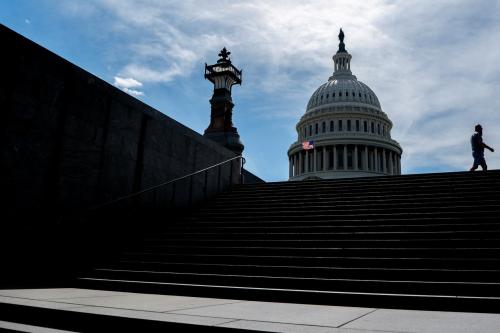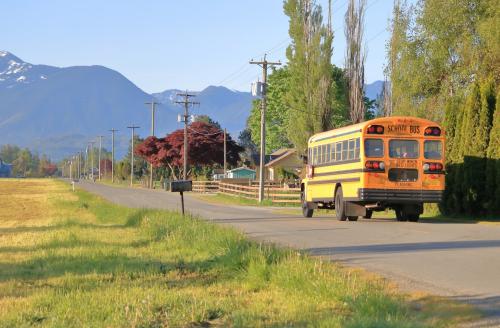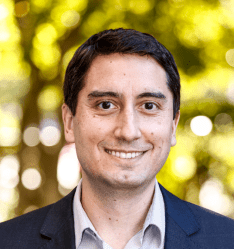On Tuesday, June 26, Jon Valant participated as a witness in a U.S. Senate spotlight forum on school vouchers. Senator Mazie Hirono (D-Hawaii) led the hearing and was joined by Sens. Durbin (D-Ill.), Hassan (D-N.H.), Kaine (D-Va.), Klobuchar (D-Minn.), and Van Hollen (D-Md.).
The text of Valant’s opening remarks appears below. Full video of the hearing is available at this link. For additional Chalkboard content on private school choice reforms, see our work on the proposed federal tax-credit scholarship program (link 1, link 2), state-level ESA programs (link 1, link 2), and broader voucher reforms (link 1, link 2, link 3).
Thank you, Senator Hirono, for the opportunity to speak with you today. My name is Jon Valant. I am a senior fellow at the Brookings Institution, a nonpartisan think tank, where I am the director of the Brown Center on Education Policy. The views that I express today are my own.
As you know, this has been a hard decade for America’s students. They have suffered from an inadequate response to COVID-19 learning loss1, increasing strains on their mental health, sudden changes to the workforce that awaits them, and culture-war conflicts that have infected our politics and policymaking.
This is a time when we should be rethinking educational policy and practice. We need reforms that respond to the challenges of the day and prepare students for tomorrow. I worry, however, that where major changes are happening, those changes are more likely to exacerbate our problems than to solve them.
I am talking, in particular, about a recent wave of private school choice reforms. Many Americans are familiar with the basic idea of school vouchers. The government offers funds to families that they can use to pay for private school tuition.
We have seen voucher programs arise over the years. Most of these programs are small and targeted to students with particular needs, such as students in poverty or students with disabilities. At best, they have a mixed record of performance, and some have produced dismal academic results.2
Over the last few years, a new breed of private school choice programs has emerged. These are much larger than past voucher programs and less targeted to students in need.
I’d like to take a minute to describe the two key types of programs. The first are universal education savings account (ESA) programs, which are primarily state-level programs. The second are tax-credit scholarship programs. The federal government soon might create a 50-state, tax-credit scholarship program through the budget reconciliation process. It is known as the Educational Choice for Children Act, or ECCA.
Let’s start with universal ESA programs. Over the last few years, several states have created ESA programs to cover private school tuition or other expenses for nearly all families, regardless of need. Arizona was the first out of the gate, which makes its program especially important to monitor.
We don’t know much about how Arizona’s universal ESA program is affecting student outcomes—and it’s not clear that we ever will. That’s because that program, like many ESAs, lacks transparency or accountability for student outcomes. However, we do know something about who is receiving those funds. Most of Arizona’s early ESA recipients were already attending private schools.3 The highest ESA participation rates were in the wealthiest ZIP codes; the lowest participation rates were in the poorest ZIP codes.4
These patterns are not unique to Arizona. Other states’ ESA programs share this pattern of higher participation rates in high-income areas—and disproportionate participation from families already enrolled in private schools.5
Why is this the case? One possible explanation involves the location of private schools. Rural communities, which tend to have relatively low average incomes, have far fewer private schools nearby.6 Rural families may have less use for ESA funds.
Another explanation involves the gap between the cost of attending private school and the value of most states’ ESA offerings. Often, families must pay several thousand dollars to cover that difference. That can be too much for families without much disposable income. Moreover, private schools may increase their tuition rates in response to the introduction of an ESA program. A study from Princeton University found evidence of this occurring in Iowa.7
Those are ESA programs. Now, let’s consider ECCA, which is the proposed federal tax-credit scholarship program.
With tax-credit scholarship programs, money moves in circuitous ways to avoid the legal—and perhaps political—obstacles that confront vouchers. The basic idea is that a “donor” gives money to a scholarship-granting organization (SGO), and then the SGO provides a voucher to families. The donor receives a tax credit for their contribution.
ECCA is unusual in many respects, even for a tax-credit scholarship program. We should consider both the donors and the SGOs as outlined in ECCA.
The “donors” are more likely to make money than give money away. That’s because ECCA allows individuals to donate stock to SGOs and receive a full, 1:1 tax credit for their contribution. In effect, this makes ECCA a tax shelter that provides wealthy individuals with an avenue for avoiding capital gains taxes. It’s not the donors who fund this program. It’s taxpayers—and they are likely subsidizing wealthy individuals along the way.8
Now, consider the SGOs. Under ECCA, SGOs are hardly regulated at all. This means, for example, that an SGO could designate its funds for schools that refuse to enroll students of a certain sexual orientation, religion, or political party. In addition, there are only the slightest forms of transparency and accountability—and a lot of room for waste and abuse.9
Let’s consider a brief illustration of how this could play out. This scenario looks, to me, entirely compliant with both the House and Senate bills.
A billionaire hears that he can avoid paying capital gains taxes by moving funds to an SGO. He encourages his friend to start an SGO that steers funds to their wealthy community. Our billionaire donates $2 million of stock to the SGO, which he gets back, in full, as a tax credit. Because he didn’t have to pay capital gains taxes on his earnings, he has made money on this arrangement. His friend, who runs the SGO, gets to take a 10% cut of that $2 million for himself. He then hands out $50,000 apiece to some wealthy local families—with a stipulation that LGBTQ children need not apply.
My team has analyzed ECCA to assess which families are likely to benefit.10 We found that rural families are poised to benefit the least, while many high-income individuals in high-income areas will likely obtain funds for themselves. A study by the Urban Institute draws similar conclusions.11
Stepping back, I think we should remind ourselves about the federal government’s role in K-12 education. Historically, that role has emphasized: data collection and transparency; protecting students from discrimination; and compensatory funding for students in need. I would argue that we should evaluate ECCA through this lens.
Before concluding, I would like to be clear about one point that I am not making today.
I am not saying that the status quo for U.S. schools is good enough. It quite clearly is not. We have a lot of work to do to ensure that all students, regardless of their lot in life, enjoy the lifelong benefits of outstanding teachers, high-quality curriculum, and nurturing school environments. The reality, though, is that policies hostile to public schools are unlikely to achieve these outcomes—and risk leaving us with a more stratified, less efficient education system than the one we have today.
Thank you. I look forward to your questions and today’s discussion.
-
Footnotes
- https://educationrecoveryscorecard.org/wp-content/uploads/2025/02/Pivoting-from-Pandemic-Recovery-to-Long-Term-Reform-A-District-Level-Analysis.pdf
- https://www.brookings.edu/articles/more-findings-about-school-vouchers-and-test-scores-and-they-are-still-negative/
- https://www.azed.gov/sites/default/files/2024/11/ESA_FY25_Q1_Executive_%26_Legislative_Report.pdf
- https://www.brookings.edu/articles/arizonas-universal-education-savings-account-program-has-become-a-handout-to-the-wealthy/
- https://www.future-ed.org/early-returns-first-results-from-the-new-wave-of-public-funding-of-private-schooling/
-
https://www.brookings.edu/articles/how-the-educational-choice-for-children-act-would-benefit-the-wealthy-and-underserve-rural-america/
https://www.urban.org/research/publication/analyzing-distribution-benefits-under-educational-choice-children-act - https://eric.ed.gov/?id=ED650846
- https://itep.org/educational-choice-for-children-act-tax-avoidance-private-school-vouchers/
- https://www.brookings.edu/articles/the-educational-choice-for-children-act-opens-the-door-to-waste-fraud-and-abuse/
- https://www.brookings.edu/articles/how-the-educational-choice-for-children-act-would-benefit-the-wealthy-and-underserve-rural-america/
- https://www.urban.org/research/publication/analyzing-distribution-benefits-under-educational-choice-children-act
The Brookings Institution is committed to quality, independence, and impact.
We are supported by a diverse array of funders. In line with our values and policies, each Brookings publication represents the sole views of its author(s).







Commentary
The risks of universal private school choice programs
Jon Valant’s testimony before the Senate spotlight forum on school voucher impacts
July 1, 2025